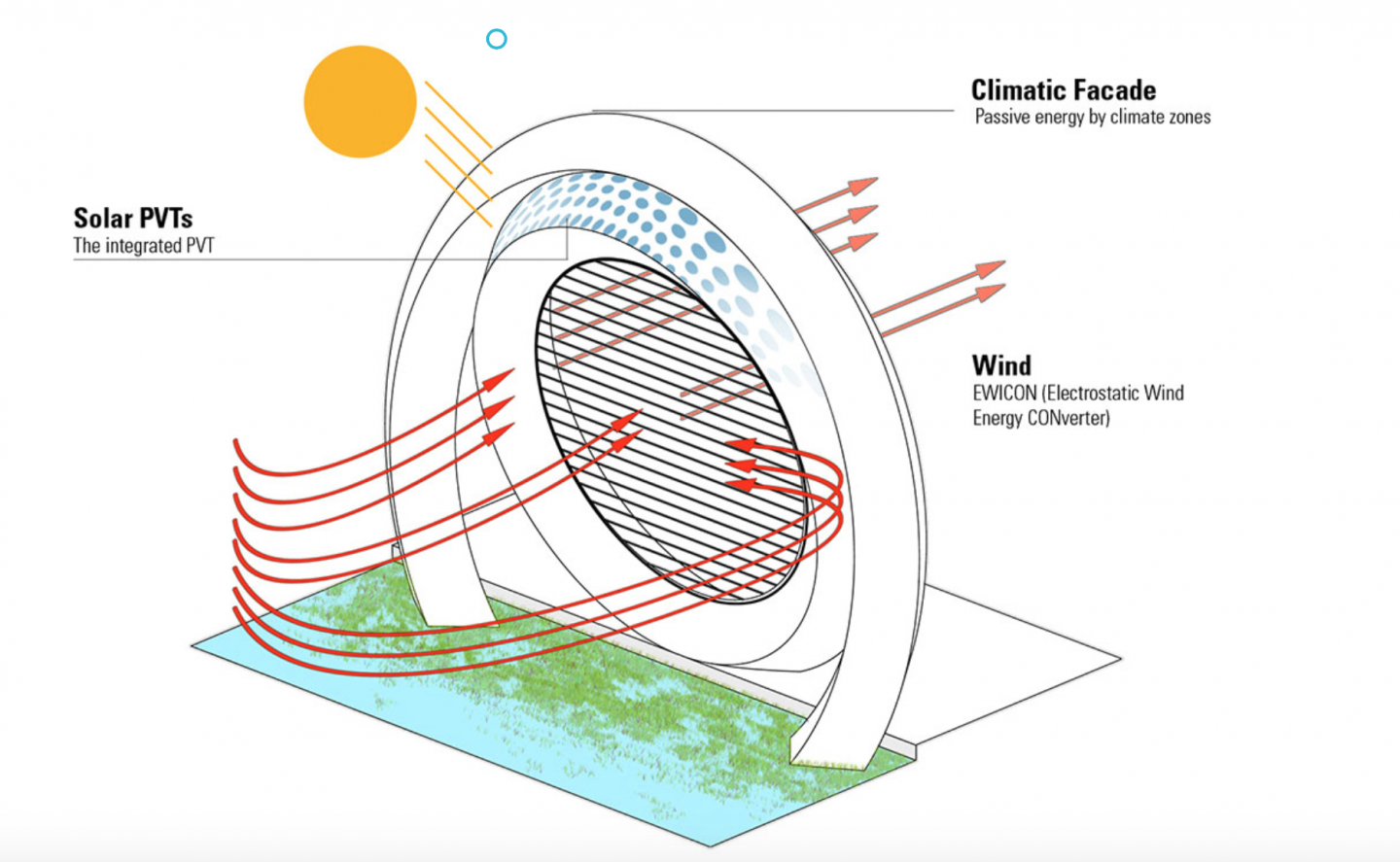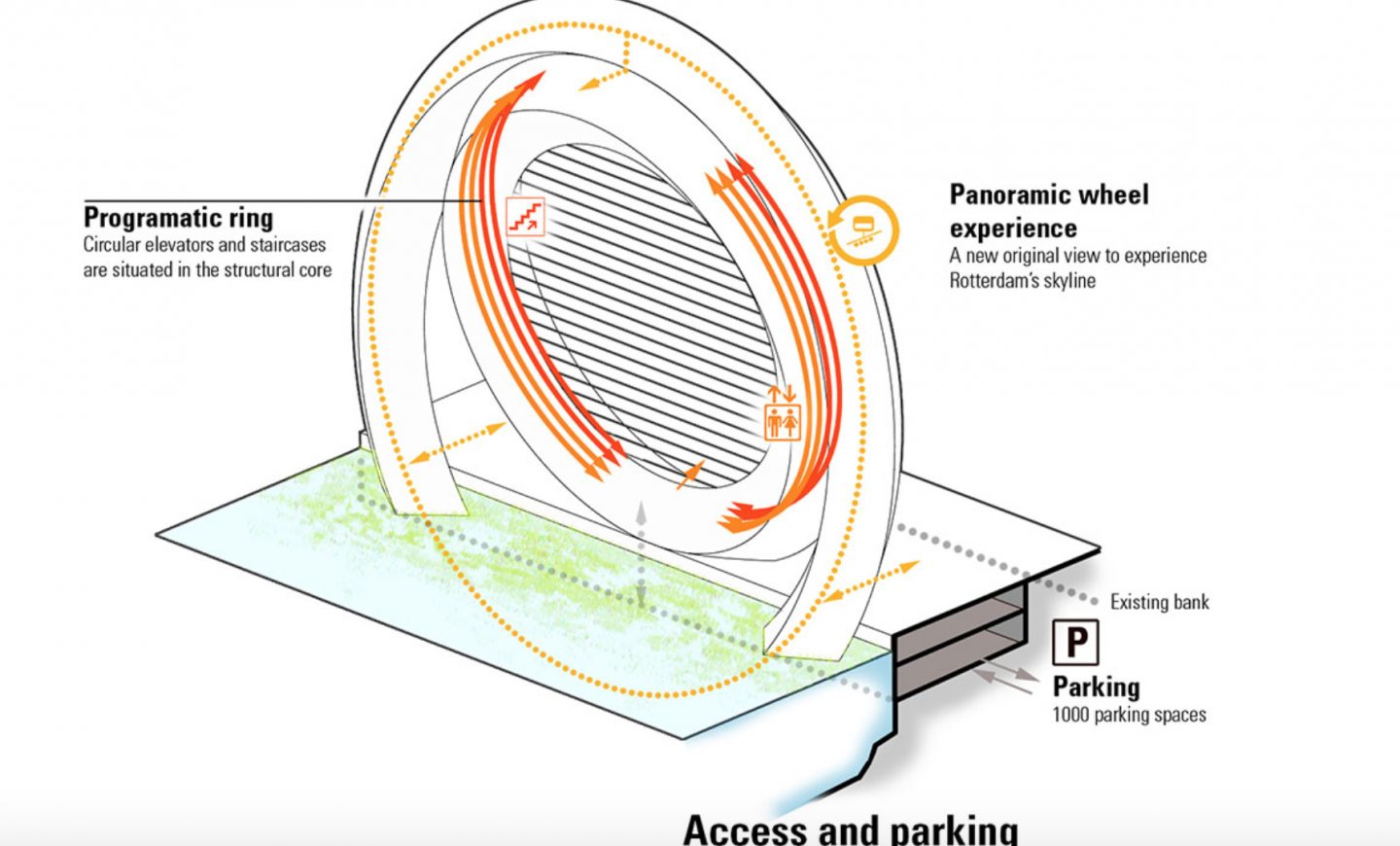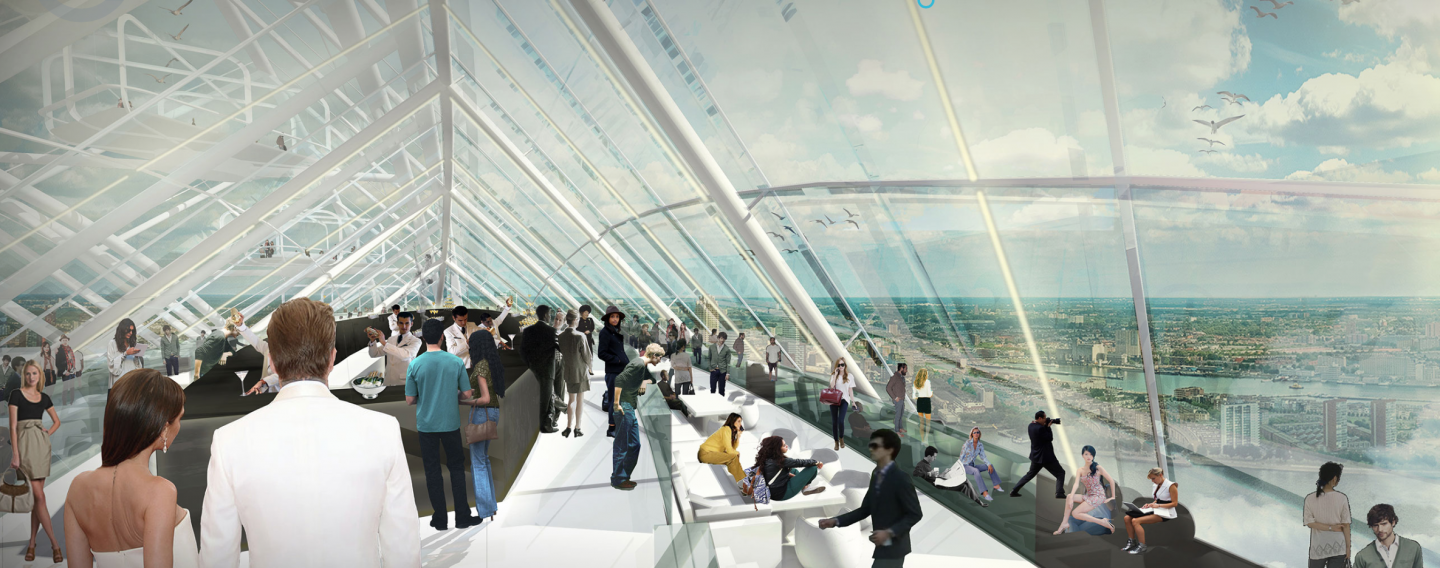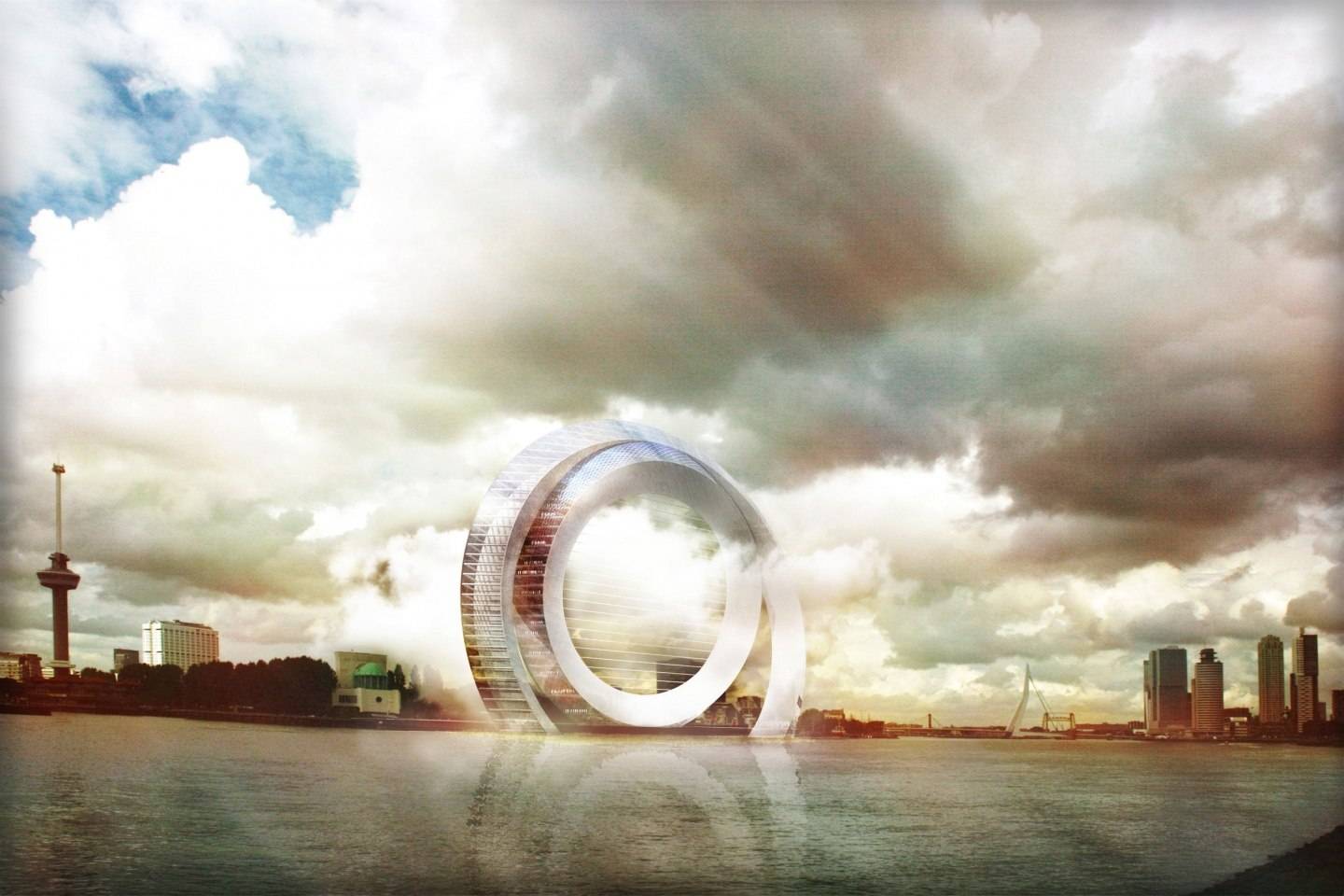Famous for its windmills, the Netherlands is about to take renewable energy for a brand new spin.
Rotterdam, Europe’s largest port city, is coming clean with the proposed Dutch Windwheel, the world’s most innovative and energy-efficient wind turbine. Slated to open in 2020, it will dramatically alter the city’s skyline as a contemporary architectural spectacle and the greatest showcase of Dutch Clean Technology.

The Dutch Windwheel is an attraction that will instantly change the fortunes of Rotterdam as a travel destination.
The 570-foot-tall future landmark will feature pioneering Electrostatic Wind Energy Converter (EWICON) technology, which allows the Dutch Windwheel to convert wind energy into electricity via steel tubes and no moving mechanical parts. This translates to less wear, lower maintenance costs, no noise, and no moving shadows on the landscape.
Developed by a government-funded consortium (the Dutch Windwheel Corporation), which includes TU Delft and Wageningen University, Dutch Windwheel boasts a state-of-the-art design of two intertwined, three-dimensional rings (one as part of the foundation) crafted from a light, open steel-and-glass construction. One ring serves as the foundation, which extends underwater—giving the appearance that the renewable windmill is floating on the harbor.
The Dutch Windwheel is a mixed-use facility whose inner ring boasts commercial space, underground parking, 72 permanent apartments, a 160-room hotel across seven floors, a sky lobby observation deck, and a panoramic restaurant. The wind turbine is unlike any other windmill in the Netherlands—or for that matter, in the world. The inner ring also features unique circular elevators and staircases in the project’s structural core.
A digital lighting and panoramic 3D interactive roller-coaster experience chronicles the great history of the Dutch water management system (the most advanced in the world) via the façade’s “smart walls,” which are actually glass panels that project a virtual layer of information. Part of this thrill ride includes an underwater film experience with guests literally under the surface of the harbor.

The Netherlands is famous for its sustainable windmills which power towns, cities and its reputation as a world-class efficient energy producer.

The mixed-used Dutch Windwheel features residences, a hotel, commercial space and a roller coaster 3-D experience.
Above the surface, forty traveling, rail-linked coaster cabins sprint through the outer ring, offering tourists sweeping views of Rotterdam, its harbor, architecture, the recently-reconstructed Second Maasvlakte port, Kinderdijk’s group of 18th century mills (a UNESCO World Heritage Site), the sea, and even the cities of Delft, The Hague, and Dordrecht.
Much like the St. Louis Arch, the Dutch Windwheel will dominate Rotterdam’s skyline and inject the city with pride and new energy (both figuratively and literally speaking). The landmark is expected to draw profit within 10 years while attracting hordes of tourists per year to the local economy. With a predicted 1.5 million annual visitors, the iconic Dutch Windwheel offers tourists reason to give another “dam” about the Netherlands—crossing Amsterdam and Rotterdam off of their bucket lists.


